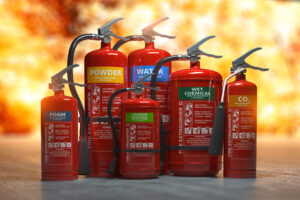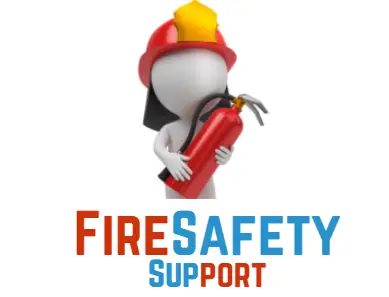Fire suppression systems are an essential part of fire safety and are designed to detect and suppress fires before they can spread and cause damage. These systems use a variety of technologies, including smoke detectors, heat detectors, and sprinkler systems. Here, you will get to know what is fire suppression system and its importance.
A fire suppression system is a system that is designed to detect and suppress fires before they can spread and cause damage. Fire suppression systems use a variety of technologies, including smoke detectors, heat detectors, and sprinkler systems, to quickly detect and suppress fires.
There are different types of fire suppression systems, including water-based, gas-based, and powder-based systems, each of which is suitable for different applications and environments. Fire suppression systems can be used in a variety of settings, including buildings, vehicles, and industrial facilities, to protect against fires and minimize the damage they can cause.
What are the types of fire suppression systems?

There are several types of fire suppression systems, each of which is designed for a specific application and environment. The most common types of fire suppression systems include:
1. Water-based fire suppression systems
These systems use water to extinguish fires by cooling and smothering the flames. They are the most common type of fire suppression system and are typically used in buildings, vehicles, and other enclosed spaces.
2. Gas-based fire suppression systems
These systems use gases, such as carbon dioxide or halon, to extinguish fires by depriving them of oxygen. They are often used in sensitive environments, such as computer rooms, where water-based systems could cause damage.
3. Powder-based fire suppression systems
These systems use dry chemical powders, such as monoammonium phosphate, to extinguish fires by interrupting the chemical reaction of the fire. They are typically used in industrial settings, where they can quickly suppress fires in large, open areas.
In addition to these common types of fire suppression systems, there are also other specialized systems, such as wet chemical systems, which are used in commercial kitchens, and foam systems, which are used in aircraft hangars and other flammable liquid storage areas.
Each type of fire suppression system has its own unique characteristics and capabilities, and it is important to choose the right system for your specific needs and environment.
Do fire suppression systems need to use water?
Not all fire suppression systems need to use water. While water-based fire suppression systems are the most common type of fire suppression system, there are also other types of systems that use different extinguishing agents.
For example, gas-based fire suppression systems use gases, such as carbon dioxide or halon, to extinguish fires by depriving them of oxygen.
Powder-based fire suppression systems use dry chemical powders, such as monoammonium phosphate, to extinguish fires by interrupting the chemical reaction of the fire. These systems do not use water and are suitable for use in environments where water-based systems could cause damage or other problems.
How does a fire sprinkler work?
A fire sprinkler is a type of fire suppression system that uses water to extinguish fires. It consists of a network of pipes that are installed in a building or other structure and are connected to a water supply. The pipes are fitted with sprinkler heads, which are designed to open and release water when they are triggered by heat.
When a fire starts, the heat from the flames causes the temperature in the room to rise. This causes the sprinkler head to activate, either through a fusible link that melts at a specific temperature or through a heat-sensitive element that responds to the increased temperature.
When the sprinkler head activates, it opens a valve in the pipe, releasing a stream of water that is directed at the fire. The water cools and smothers the flames, extinguishing the fire before it can spread.
In addition to releasing water, the sprinkler head also triggers an alarm, which alerts the building occupants and the fire department that there is a fire. This allows them to evacuate the building and take other necessary precautions and enables the fire department to respond quickly and extinguish the fire before it can cause significant damage.
Overall, a fire sprinkler is a simple yet effective tool for suppressing fires and protecting buildings and other structures from the dangers of flames. By quickly releasing water onto the fire, it can extinguish the flames and prevent the fire from spreading, minimizing the damage it can cause and save lives and property.
Who is in charge of fire control systems?
The exact person or organization in charge of fire control systems will vary depending on the specific situation and location. In general, fire control systems are installed and maintained by a variety of organizations, including building owners, fire departments, and fire protection companies.
Building owners are typically responsible for installing and maintaining fire control systems in their buildings and for ensuring that they are functioning properly and are ready to respond in case of a fire. They may hire a fire protection company to design, install, and maintain the fire control system, or they may do it themselves if they have the necessary expertise and equipment.
In addition, fire departments are also involved in fire control systems, as they are responsible for responding to fires and ensuring that they are quickly extinguished.
They may inspect and test fire control systems to ensure that they are functioning properly and are compliant with relevant regulations and standards. In addition, they may provide training and guidance to building owners and other stakeholders on how to properly use and maintain fire control systems.
Recommended:
How does fire suppression system work?

Fire suppression systems are designed to detect and suppress fires before they can spread and cause damage. They use a variety of technologies, including smoke detectors, heat detectors, and sprinkler systems, to quickly detect and suppress fires.
When a fire starts, the heat from the flames causes the temperature in the room to rise. This can trigger the fire suppression system, which uses sensors to detect heat and the presence of smoke. When the system is activated, it takes the appropriate action to suppress the fire.
For example, a water-based fire suppression system will release water onto the fire, using sprinkler heads or other devices to direct the water at the flames. The water cools and smothers the fire, extinguishing the flames before they can spread.
A gas-based fire suppression system, on the other hand, will release gas, such as carbon dioxide or halon, into the room. The gas deprives the fire of oxygen, extinguishing the flames and preventing the fire from spreading.
In addition to suppressing the fire, fire suppression systems also trigger an alarm, which alerts the building occupants and the fire department that there is a fire. This allows them to evacuate the building and take other necessary precautions and enables the fire department to respond quickly and extinguish the fire before it can cause significant damage.
Furthermore, the fire suppression systems are an essential part of fire safety and are designed to quickly detect and suppress fires before they can spread and cause damage. By using a variety of technologies and extinguishing agents, they can effectively suppress fires and protect buildings and other structures from the dangers of flames.
How to operate fire suppression system
To operate a fire suppression system, follow these steps:
1. Familiarize yourself with the fire suppression system and its components. Understand how the system works, what type of extinguishing agent it uses, and how to activate it in case of a fire.
2. Identify the location of the fire suppression system control panel and the manual activation devices, such as pull stations or control valves. These devices are used to manually activate the fire suppression system in case of a fire.
3. In case of a fire, activate the fire suppression system by pulling the manual activation device or pressing the appropriate button on the control panel. This will trigger the fire suppression system, causing it to release the extinguishing agent and suppress the fire.
4. If the fire suppression system is not automatic, or if the automatic system fails to activate, use a fire extinguisher to suppress the fire. Follow the instructions on the fire extinguisher, and aim the nozzle at the base of the flames to extinguish the fire.
5. Evacuate the building, and call the fire department to notify them of the fire and request assistance.
Once the fire is extinguished, inspect the area for any remaining fire hazards, and take steps to prevent the fire from reigniting. This may include ventilating the area, removing any damaged materials, and ensuring that the fire suppression system is functioning properly.
Cost of fire suppression system
The cost of a fire suppression system will vary depending on a number of factors, including the size and type of the system, the materials and technologies used, and the complexity of the installation. In general, the cost of a fire suppression system can range from a few hundred dollars for a small, basic system to tens of thousands of dollars for a larger, more complex system.
To get a better idea of the cost of a fire suppression system, it is best to consult with a fire protection company or other experts.
They can assess your specific needs and requirements and provide a detailed estimate of the cost of the system, including the materials, labor, and any other associated costs. By working with a professional, you can ensure that you get the right fire suppression system for your needs at a price that fits your budget.
Is ansul system the same as fire suppression system?
Yes, an ANSUL system is a type of fire suppression system. ANSUL is a brand of fire suppression systems, which are manufactured by Tyco Fire Protection Products. ANSUL systems are designed to protect a variety of environments, including commercial kitchens, industrial facilities, and marine vessels, from the dangers of fires.
ANSUL systems use a variety of technologies and extinguishing agents to detect and suppress fires, including wet chemical systems, foam systems, and gaseous systems. They are designed to be reliable and effective and are used in a wide range of applications around the world.
Overall, an ANSUL system is a specific brand of fire suppression system which is designed to provide reliable and effective protection against fires in a variety of environments. It is one of many available options for fire suppression systems and is used by a wide range of customers around the world.
Conclusion
This post on what is fire suppression system is resourceful to let you know the importance of taking the right steps to safety. Fire suppression systems are an essential part of fire safety and are designed to detect and suppress fires before they can spread and cause damage.
These systems use a variety of technologies, including smoke detectors, heat detectors, and sprinkler systems, to quickly detect and suppress fires.

